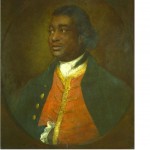
-
Black Lives Matter! This is a safe place.
Posted on June 12, 2020 by WRS in Educational, News, Reference, Regency.Washington Regency Society wants all people to feel welcome, valued, and safe at our meetings and events. There is no place in WRS for racism or discrimination of any kind. If you have not felt welcome and safe, we are sorry. If you have any questions or concerns, please do not hesitate to contact society@waregency.org and your email will be addressed promptly.
The recent killing of George Floyd and so many others in the African-American community is a human rights issue. Silence is complicity, and WRS members are responding in a variety of ways. Some are protesting, some donating, some writing letters, some posting on social media, some educating themselves, some listening, some having hard discussions with friends and family. These are all important things to do.
We can learn from history, especially Regency era history, about how Black people have been treated and their struggles for emancipation, recognition and equality.• 1787 – The Society for Effecting the Abolition of the Slave Trade is formed, including Josiah Wedgwood, the potter and Mary Wollstonecraft, the feminist writer• 1791 – English boycott of slave-grown sugar after the failure of the Abolition Bill• 1794 – Abolition of slavery throughout all territories of the French Republic• 1807 – Abolition of the Slave Trade Act• 1820 – Missouri Compromise (no more slave states are allowed north of 36°30’)Here are some links to Regency era subjects related to Black History:—British National Archives – Black Presence – Asian and Black History in Britain, 1500-1850
Many learning opportunities in this link but especially related to the Regency era is: The Abolition of the Slave Trade Act 1807
Despite opposition from a variety of people with vested interests, the abolitionists and their supporters persisted. In 1806, Lord Grenville made a passionate speech arguing that the trade was ‘contrary to the principles of justice, humanity and sound policy’. When the bill to abolish the slave trade was finally voted upon, there was a majority of 41 votes to 20 in the Lords and a majority of 114 to 15 in the Commons.
On 25 March 1807, the Abolition of the Slave Trade Act entered the statute books. Nevertheless, although the Act made it illegal to engage in the slave trade throughout the British colonies, trafficking between the Caribbean islands continued, regardless, until 1811.Black Past
A reference center providing information on African American History
Primary Documents of American History
These are documents which have contributed to the shaping of African American history. These documents are a starting point for additional research and discussions that help further our understanding of the history of people of African ancestry in the United States. [Many of these are from the era WRS calls The Regency.]
——————————————————————————————————————Ignatius Sancho: An African Man of Letters
Ignatius Sancho (1729-1780) was said to have been born a slave on a ship crossing the Atlantic from Africa to the West Indies in 1729. His earliest personal memories were of Greenwich, near London, where he was forced to work as a child slave in 1730s. He persuaded the powerful Montagu family to employ him as their butler, before retiring to run a grocery shop in Westminster, where he died in 1780.Sancho composed music, appeared on the stage, entertained many famous figures of literary and artistic London, and his portrait was painted by Thomas Gainsborough. The first African we know of to vote in a British election, he wrote a large number of letters which were collected and published in 1782, two years after his death.18th and early 19th century Black Composers
Seattle Area artists performing music featuring Black 18th and early 19th Century composers music including Ignatius SanchoBritish Abolitionists
Detailed information on British abolitionists of the eighteenth and nineteenth centuries. Included are men and women who worked in the political campaign against slavery, but also those who wrote antislavery poems, novels, and plays.Josiah Wedgwood
Most famous for his pottery he was an member of the Society for the Abolition of the Slave TradeNational Museum of African American History & Culture: Talking about Race
Talking about race, although hard, is necessary. NMAAHC provides tools and guidance to empower your journey and inspire conversation.






